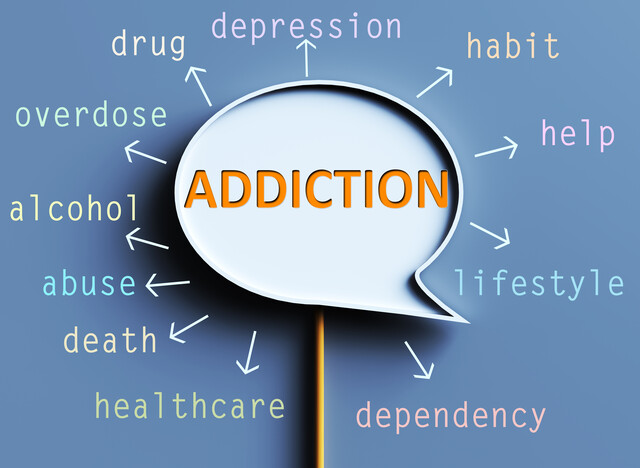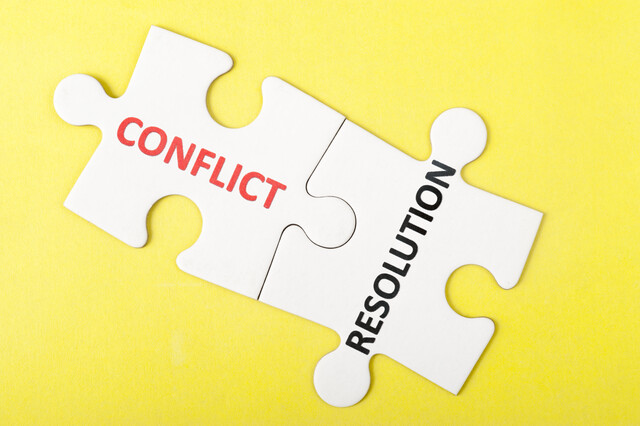Starting from infancy and stretching all the way through the teenage years and young adulthood, the social domain is the primary area of development in which children will synthesize and practice all of the other developmental milestones and skills.
Common Social Stressors
ages 0-3 - In the early years, social stressors present themselves in the context of the child's development as a person separate from their parents but still in very close relationship to their parents, siblings, and other close family and caregivers. Infants need to be close to their parent or caregiver for significant portions of the day for individualized attention, as well as physical care. This attachment must be established in order for the infant to then begin discriminating between themself as connected to a trusted adult and themself as an independent person. Common stressors around this process occur when the infant or young child is starting to make that transition from attachment to limited independence with close and constant adult supervision. They may cry or otherwise exhibit unease when a parent or other trusted adult leaves for work or simply leaves the room. This is called separation anxiety. Though separation anxiety can be extremely stressful for parents, it is a sign of healthy social development in the child.
ages 3-12 - In the preschool through middle childhood years, social stressors can present themselves in a greater variety of ways than in the early years. This is because the child is now actively developing and maintaining social relationships with a wider array of peers as well as adults. In addition to parents and caregivers, teachers and other school staff are now a daily part of the child's life. At this age, the child is differentiating themself as an independent person who has a variety of different social roles across different contexts, for example, child and sibling at home, student and friend at school, team player during sports practices and games, etc. Sometimes it can be hard for children at this age to balance more complex social exchanges within friendships, such as equal trading of play date invitations, equal social volleys within social play and activity contexts, and applying prosocial skills with peers who need help. Potential social stressors expand to include direct conflict in the form of disagreements with friends and peers, relational aggression in which cliques are formed with the express intent of causing social distress in another peer, and other selectively inclusive and conversely exclusive social decisions. This is also the age range when early bullying will start to emerge. Bullying at this age can include unkind words or actions in a face-to-face context, as well as more secretive bullying where one child instigates another child, the "bully victim," to carry out the bullying behavior either directly or electronically in some cases even at this early age. In general, it can be hard for children at this age to manage balancing friendship initiations and responses as the social arena becomes rockier and children are more prone to experience failure of a friendship at least once some time during the elementary years.
ages 12-18: For teenagers and young adults, complex bullying can become a daily stressor in what feels like an almost instantaneous shift to the parents and other adults in the teen's life. In complex bullying and cyberbullying, adults are often not aware of the specific dynamics of emotional aggression or even sometimes physical aggression taking place because teens are much less likely to confide in parents and older adults at this age. Once parents do become aware of a particular bullying platform like an online chatroom or app and close down access to that platform, teens will often almost immediately find a way around that roadblock by logging in through a different internet access point or finding a new platform altogether. This is also the age where independent friendships begin to coalesce into larger friendship networks and groups, including development of tighter delineations between cliques and more instances of exclusion. In the latter half of adolescence, house parties can also become a potential source of stress for teens as there is often little to no supervision at these parties. Teens may have to lie or deceive their parents in order to attend the party, and there are likely to be substances like alcohol present. Also at this age, romantic relationships are starting to become an important part of the teen's life and can cause anxiety around acting on "crushes," beginning relationships, early problem solving skills, and conflict within romantic pairings. Lastly, teenagers are actively expanding their network of confidantes and trusted adult advisors beyond the parental unit. This means that they may be put into situations that involve stress around discussion of personal and sensitive topics with new people and reliance on advice on how to deal with problems from people who may not have much more experience themselves.
Managing Social Stressors
ages 0-3 - In these early years, parents and caregivers should focus on helping the child achieve a strong sense of self-awareness and self-confidence. This will support later relationship skills, as well as the ability to deal with conflict without losing too much self-esteem. For example, when the child begins expressing dissent by shaking their head saying "no," or waving their arm back and forth when they do not want a hug from a parent or sibling, honor this advocacy by saying something along the lines of, "Good job telling us you do not want a hug right now." This is also a good time to start teaching early skills for self-management in social contexts. This looks like responding positively when the child demonstrates a desire for independence, though they will still require a lot of help and scaffolding with smaller tasks that make up larger routines. For example, the child can practice accomplishing clean up routines in their room or play area by putting individual toys into a basket while the adult completes higher level organizational tasks associated with cleaning the room. Finally, at this age, parents should reinforce bids for attention from the child. This is their way of socially communicating attachment needs to the adult closest to them. This may happen when the child is not outwardly upset as well as when they are experiencing discomfort or sadness. When the child is crying or upset, it may be appropriate to prompt a bid for attention by asking, "Do you want a hug," and offering arms out. Teaching trust within social routines will promote a solid foundation for developing empathy. This also applies when managing separation anxiety. When the parent says goodnight or says goodbye, they should tell the child when they will return and then follow through so that the child learns to trust the communication from the adult in the context of the relationship. For example, when dropping off at daycare or a playgroup, say "Goodbye, I love you, I'll see you after school" and then leave, instead of drawing out the goodbye process to be longer and involve multiple instances of returning to comfort in the case of tears.
ages 3-12 - In preschool through middle childhood, the parent's or caregiver's role in managing social stressors begins to take more of a "directorial" approach in many situations, whereas in the earlier years, the parent often played the "lead role." At this age, the parent often acts as the social coach for the child's relationship with peers within supervised play dates and other get-togethers like co-op preschools, library story time, and enrichment activities like sports. In preschool and early elementary, parents and caregivers should arrange facilitated play dates. The parent hosting the play date should set expectations with the children at the beginning of the play date by taking turns with a one-minute rule. Giving children specific expectations for how they can succeed in play dates is better than broad expectations like "share." Then, throughout the play date, parents and caregivers should welcome small occurrences of conflict as an opportunity to practice meeting expectations and practice positive problem solving skills. Parents and caregivers can also model empathy and advocacy in these types of situations, especially when there are more than two children in the play group. For example, the parent can say, "I heard Bobby ask if anyone wants to play with cars earlier but no one heard him. Let's go play cars with Bobby," and then follow through. As the child gets older, parent facilitation can be gradually faded out in the moment as children begin spending more time independently in larger peer groups with not as much adult supervision, for example, during recess at school where there are a few recess teachers present for a number of classes at once. At this point, parents can still scaffold independent skills for managing social stressors by engaging in frequent discussions with the child. This looks like reviewing positive things that happened during the day, as well as events that were stressful or uncomfortable. The child may bring up being chased at recess by a peer when they did not want to play chase. The parent can suggest several solutions like asking the peer if they want to play something other than chase, telling the peer, "I don't want to play right now, maybe later," or advocating to the recess teacher for help if other strategies don't work. Normalizing conflict resolution and building fluency with dealing with uncomfortable friendship situations will support the child to engage successfully with even more complex social situations in the teenage years. Finally, this is also the time to ensure teaching anti-bullying and other prosocial skills happen regularly both in structured situations like school and in more "loose" situations like family get-togethers. Anti-bullying skills include managing indirect conflict and relational aggression by consciously removing oneself from the situation and supporting other vulnerable peers to also remove themselves, as well as advocating in more obvious instances of direct bullying.
ages 12-18 - Teenagers and young adults are now encountering a wide array of potential social stressors around more subtle bullying or cyberbullying as well as the introduction of romantic relationships. Parents and other trusted adults in the teen's life should create opportunities for the teen to share both in general daily check-ins as discussed above, as well as making themselves available to hear about more serious situations whenever needed. By listening without judging in smaller instances of sharing, the parent encourages trust from the teen to share more sensitive thoughts and feelings, and to call on the adult when a social situation becomes potentially dangerous like at a house party with alcohol and other substances. Parents should set clear boundaries for cyber freedom and activities but always keep an open door policy for the teen to communicate something that happened. Parents can also provide an "easy out" via a family code word that can be texted at anytime if they need the adult to come pick them up. Also at this age, parents can continue to facilitate a wide variety of activities and interests for the teen, which will help them continue to develop as an individual even as they are defining themselves more and more in relationship to a peer group. Though parents will not be actively facilitating playdates at this age, they can still set up positive social gatherings for their teen. The parent can also encourage their teen to utilize romantic relationships as an opportunity to explore traits of a well-rounded self in a new context by helping to set up "dates" around positive activities like a cooking lesson or a beach day. Parents can also model skills for having successful conversations around sensitive topics with a partner in front of the teen at home when conflict situations naturally arise in the home, rather than retreating to a bedroom or private space. This increases the likelihood the teen will then be able to deploy these skills when needed in their own romantic relationships, as well as increase the likelihood that they will ask parents for help or advice when needed. Finally, particularly with bullying and sometimes romantic relationships, the parent can de-stigmatize and support them, asking for help from school counselors, as well as seeking professional help from outside therapists when more complex situations arise.
























